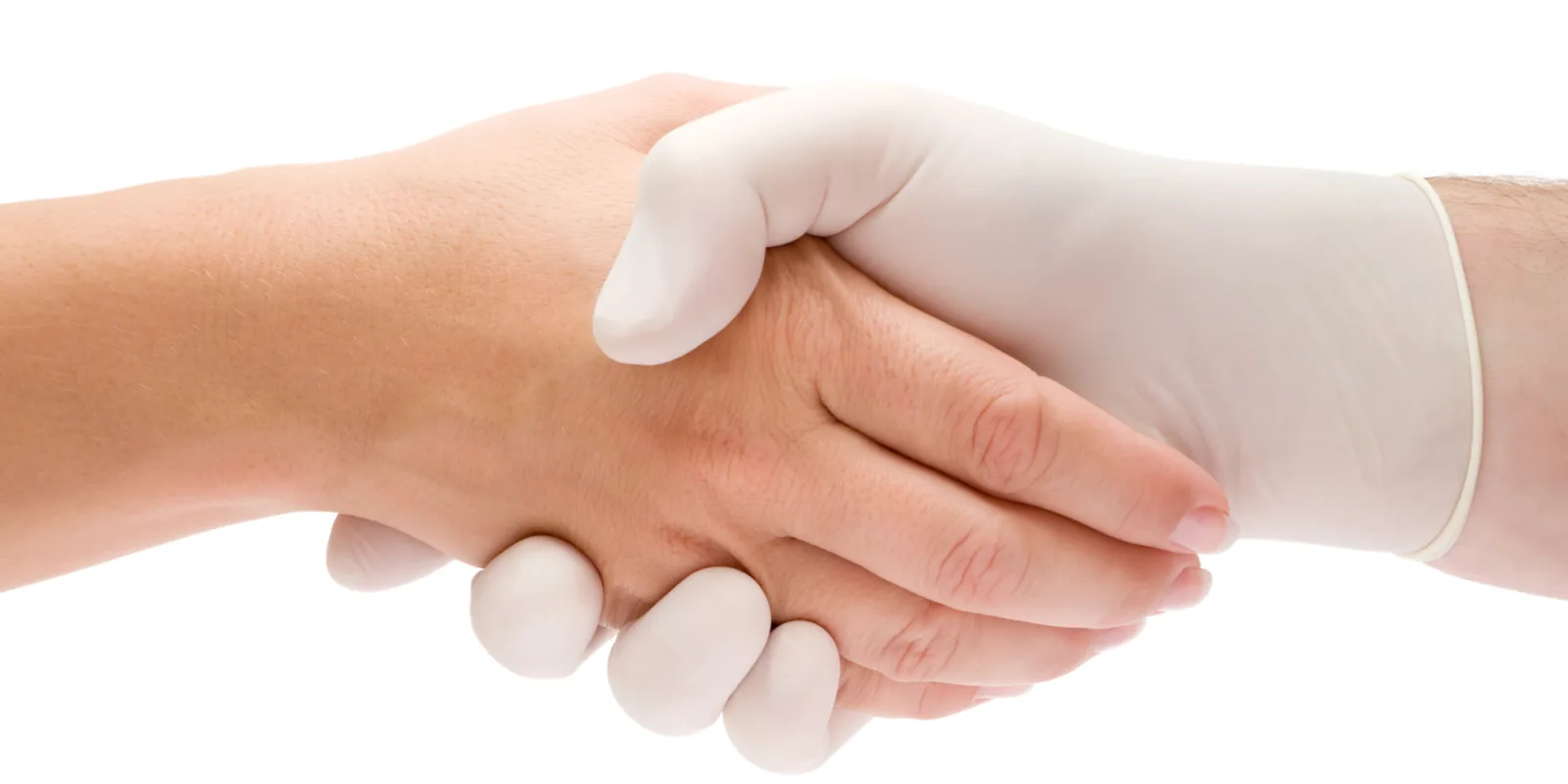
During my first year of medical school, I was working as a research assistant 10–20 hours a week in a basic science lab. We were studying the development of human pancreatic cancer, and I was working with caustic chemicals and genetically-modified viruses specifically designed to infect human cells. My first priority was to be careful with what I touched and to thoroughly wash my hands afterward. (I washed my hands so frequently that I developed a persistent patch of irritant dermatitis on the back of my hand.)
Touching would also turn out to be an important part of patient care during my clinical years. Two of the first rules that were drilled into our heads were to gel our hands with sanitizer to prevent the spread of infection and to shake the patient’s hand to acknowledge their presence and establish rapport. Touching and not touching would be important in other ways, too: every day before the start of our surgery, the residents and medical students stood side-by-side, scrubbing every surface of our hands up to our elbows with antibacterial chlorhexidine sponges; after we placed ourselves in sterile gowns and gloves, the game would be to not touch anything that was considered non-sterile in order to minimize the risk of surgical infection.
Learning these spoken and unspoken rules about what could, should, and should not be touched was a challenge, and it was also interesting to see how and when physicians used their sense of touch in practice. For example, during the first year of medical school, I volunteered for our student free clinic. An intern and I went to see a patient with an angry rash on his trunk; the intern didn’t shake the patient’s hand at the beginning, and he gloved up for most of the patient examination. However, when the attending physician — an old-fashioned doctor who had been practicing for decades — came to assess the patient for herself, after gelling, she felt the rash with a bare hand. She was unafraid to touch because she had the experience to know what she was seeing and doing. She later told me that a physician’s touch was important, not only to reassure the patient but also as a diagnostic tool. She would, of course, put on gloves when the situation demanded it, such as an open wound or genital lesion, but the most accurate physical examination could sometimes only be done if she touched the patient directly without the barrier of a nitrile glove.
Doctors also used their sense of touch as a diagnostic tool for conditions that were located deeper in the body. Through the act of “palpation” and “percussion” (doctor-speak for touching and tapping), physicians could localize the area of discomfort and figure out whether there was resonance or dullness to determine what was happening in the patient.
I saw touch deployed in clinical practice, as a tool for introduction or as a tool for diagnosis. Hand-holding was not only common in pediatrics; it was also used for any patient of any age who needed comfort and reassurance. Nurses and physicians held the hands of mothers in labor, of nervous patients undergoing general anesthesia for surgeries, of anyone who was in pain or discomfort. It was an act of tenderness that was, in a way, more powerful and necessary than what pharmaceutical compounds could offer.
Human touch is an important and versatile part of a physician's toolkit: to diagnose, comfort, and even treat. And in the clinic, it can begin with a single handshake.
Yoo Jung Kim is a medical student at Stanford University and author of “What Every Science Student Should Know” (University of Chicago Press). Her articles have appeared in the Washington Post, The Mercury News, The Seattle Times, and at KevinMD. She is a 2018-2019 Doximity Author.







